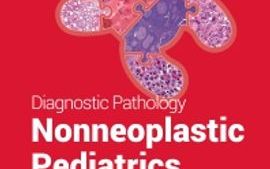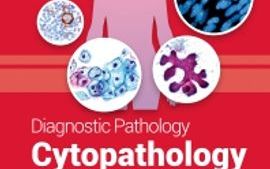As a first-year histopathology trainee, I’ve just pushed off the starting blocks within this specialty. I’ve been taught that to understand the abnormal, you must first know what normal is and this book certainly helps me find my bearings. This has, undoubtedly, made my rotations between different teams and grasping the relevant spectrum of normal histology much easier.
The contents are split into 14 sections. The first section provides an introduction to normal histology and basic histologic techniques, starting with the cellular components, to different cell types and tissues. I particularly found the immunohistochemistry of normal tissues sub-category a very helpful reference to decipher which stains highlight the different tissue types. The remaining 13 sections each represent an organ system, sub-categorised to easily find the histology you’re looking for.
There is no need to make additional notes as the information is already bullet-pointed and straight to the point. I particularly like the way the bullet-points have been structured, starting with the macroscopic anatomy to provide the context for the microscopic anatomy, with images reinforcing the text. There is an abundance of graphics with over 2,100 images, all with surprisingly stunning quality. What’s more, the images are explicitly labelled with different arrow keys to point out important aspects. As the old adage goes: a picture is worth a thousand words.
A new feature of the book is the inclusion of abnormal images which allows the reader to compare and contrast between normal and abnormal. I particularly like the use of immunohistochemical or special stains to highlight specific cells or tissue. Within the image descriptors, the authors have very helpfully mentioned whether the findings bear any clinical significance and they explain the cause of the pathology, if displayed. The authors also advise when the significance of an entity is unknown.
I feel the layout could change from 6 images per page to 4 images per page for the images to be larger, as sometimes it is difficult to appreciate what the arrows show on small, low power images. This way, the image descriptors could be separate and underneath the image, as opposed to combining two image descriptors at one side of the page.
However, this is no issue with the eBook, whereby users can take advantage of the zoom function to look more closely at the images, as well as utilise the search function to quickly help you find what you’re looking for. The eBook is a valuable reference with the many tools that Elsevier eBooks+ normally contains, including highlighting key information, bookmarks for important pages, a read aloud function and creating your own notes or flashcards to test yourself.
With the great heterogeneity of what constitutes normal histology, this book clearly illustrates the variants of normal, while outlining comprehensively the artifacts and pitfalls in interpretation. Overall, I highly recommend this book which should be core to any person’s library working in histology and provides a solid foundation for histopathology training and beyond.
Return to July 2023 Bulletin homepage
Read next
Book review: Diagnostic Pathology – Nonneoplastic Pediatrics 2nd Edition
14 September 2023
Book review: Diagnostic Pathology – Cytopathology, 3rd Edition
14 September 2023



